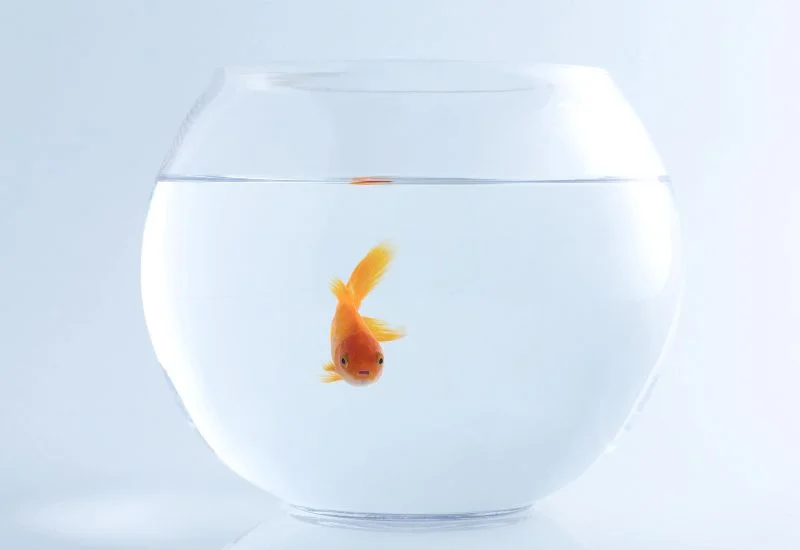Cycling a fish tank is a very sensitive process, yet many novices ignore it, resulting in drastic effects on the lives of fishes in the tank. If cycling is not done efficiently, then the water chemistry may deteriorate and toxic elements may accumulate that can be lethal to the fish.
Just think of the frustration and sorrow when you have chosen the right fish and within a few days, the poor fish found gasping or even dead. This sad story is frequently because there is such a thing as unbalanced water chemistry and the root of the problem is an uncycled tank.
Fortunately, this is a very regular issue that can be prevented perfectly if the fish tank is cycled before the fish are put into it.
This comprehensive guide will teach you how to cycle a fish tank, the necessity of the nitrogen cycle, and the different ways you can apply it.
What is an Aquarium Cycling?
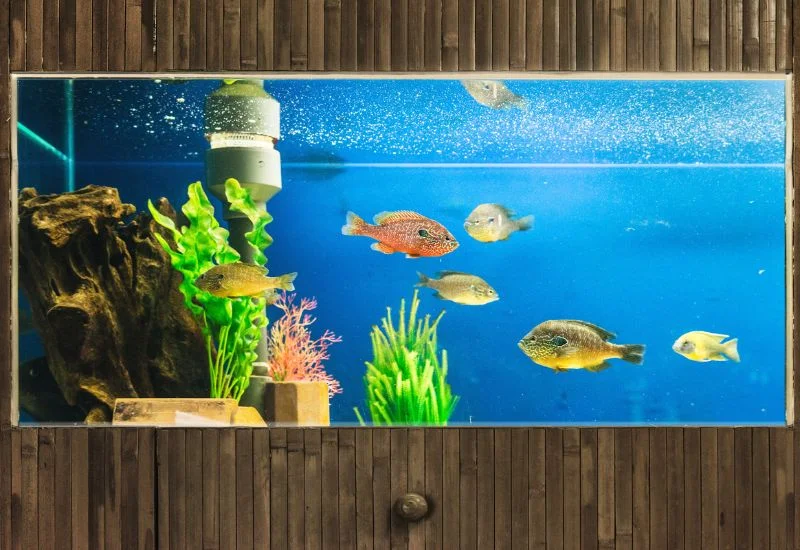
Cycling of the aquarium also called the nitrogen cycle is a biological process that occurs in all the aquariums. This process entails the growth of friendly bacteria that help clean water by metabolizing substances that are dangerous to fish.
Understanding the Nitrogen Cycle
The first point for understanding is that in a newly created aquarium, there are none of those colonies of bacteria that dispose of the waste products. Waste products from fish, uneaten remnants of food, and organic matter going through decomposition yield ammonia, which is lethal to fish even in low concentrations.
During the cycling process, two types of bacteria develop:
Ammonia-oxidizing bacteria (AOB): These bacteria change toxic ammonia (NH3) into nitrite (NO2-) which is also toxic but a bit less than ammonia.
Nitrite-oxidizing bacteria (NOB): These bacteria then reduce nitrite to nitrate, which is much less harmful, the nitrate can be eliminated by water changes or absorbed by the plants.1
The End Goal of Cycling:
Aquarium cycling is the process of getting the beneficial bacteria to form a stable colony in the aquarium and one that can deal with ammonia and nitrites, keeping them at nontoxic levels. Once the nitrogen cycle is complete, our tank is home to our fish and other water creatures and is relatively stable.
Aquarium Cycling Importance
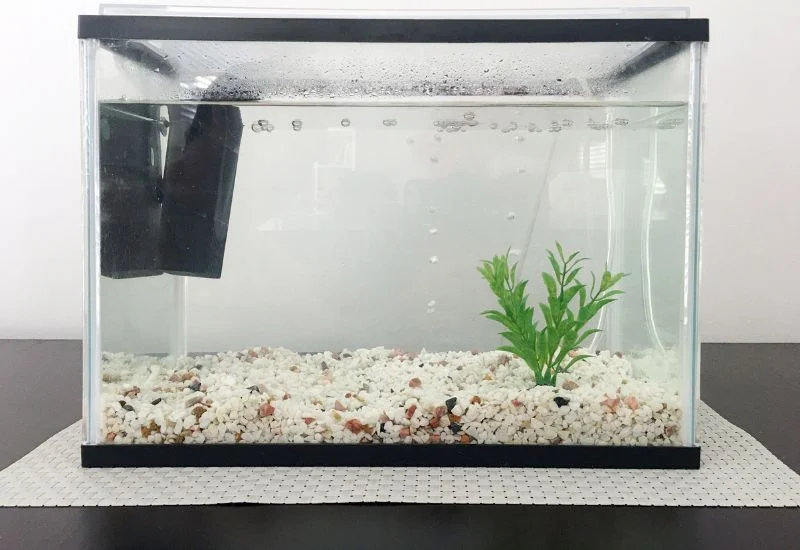
The ammonia is a crucial component of the aquarium. It is essential for the growth of plants and food for the beneficial bacteria present in the aquarium. At the same time, it is harmful to fish. So, it is calculated to maintain the balance for a safe aquarium journey.2
Prevents Toxic Ammonia and Nitrite Spikes
A newly set-up aquarium without cycling would mean the fish would be subjected to high levels of ammonia and nitrites that may stress, sicken or even kill the fish. Cycling the tank means that all the toxic elements in the water are first changed to safer nitrates for your fish.
Creates a Stable Environment
A cycled tank is one in which waste products are normally processed by beneficial bacteria. This stability is important for the continual well-being of your fish and aquatic plants and cuts down on the incidence of diseases as well as waterborne illnesses.
Reduces Maintenance
After cycling a tank, the maintenance becomes more manageable. Having established a good bacterial culture means that the likelihood of ammonia spikes will be low due to the presence of bacteria that help convert it. Cleaning and checking on the tank should be done regularly to avoid any build-up of ammonia in the water.
Supports a Healthy Aquarium Ecosystem
When the nitrogen cycle is balanced, you can introduce the fish, plants, and other organisms to the tank.
How to Cycle a Fish Tank/Aquarium?

Aquarium cycling can be done in several significant ways, which must be followed to attain the best cycle. Here’s a detailed breakdown of the process:
Step# 01
In the first step of this project, the tank has to be arranged. Before starting the cycling process, it is important to make sure your aquarium is ready with all the required equipment. This consists of the tank itself, a filter, a heater, light, and the substrate.
Use distilled water or let the tap water sit so you can remove the chlorine, as it kills the beneficial microorganisms.
Step # 2
To begin the cycling process, you should have a source of ammonia, which will be used by those friendly bacteria. There are several ways to introduce ammonia into the tank:
- Using Fish Food
- By Fish Waste
- Plants
- Artificial Ammonia
Step#03
The third step of the intervention involves the monitoring of water parameters.
Daily, weekly, or monthly use an aquarium test kit to check ammonia, nitrites, and nitrates presence in the water. Initially, ammonia concentrations will increase due to the growth of bacteria in the system.
This will take about a week or two, once the bacteria starts converting the ammonia into nitrite will start rising. Last, nitrates will show up as nitrites that get converted by the second type of bacteria in the nitrogen cycle.
Step#4
Waiting for the cycle to complete. This step requires a lot of patience. This cycle is regarded as successful when the ammonia and nitrite concentrations are at the base level (zero), and the nitrates are at a minimum permissible level, which is below 40 ppm (Parts per million).
This may take between four to eight weeks. It may take more or less time depending on the size of the tank, its temperature, and the general manner of cycling the tank.
Step#05
Water change is the process of using fresh water to replace some of the water inside the tank;
After the cycling process is over, change about 25-50% of the water to solve the nitrate level problems and then you may introduce your fish. Always add the water to the tank slowly and ensure that the temperature of the water added matches that of the tank water.
Apparatus for aquarium Cycling
To cycle your aquarium effectively, you’ll need the following tools and equipment:
- Water Testing Kit: The basic equipment that should be purchased is a test kit and the best parameters to monitor during the cycling process are ammonia, nitrite, and nitrate. Both test strips or liquid test kits can be used, although it is noted that the liquid test kits are usually more accurate.
- Ammonia Source: Depending on the used formula it may be either pure ammonia, fish food, or live fish. Make sure the source is steady so that it can keep fluctuation of ammonia levels at a minimum.
- Filter: The filter chosen today needs to allow for the high-quality bacteria that will form during the cycle. The filter media offers a substrate to which bacteria can attach and grow.
- Heater: If a person is cycling a tropical tank, then having a heater is a perfect addition since it is instrumental when it comes to increasing the rate of bacterial colonization.
- Dechlorinator: Chlorine is usually present in tap water, and it kills useful bacteria. Entice the water to the tank with a dechlorinator to remove chlorine.
Cycling with Fish
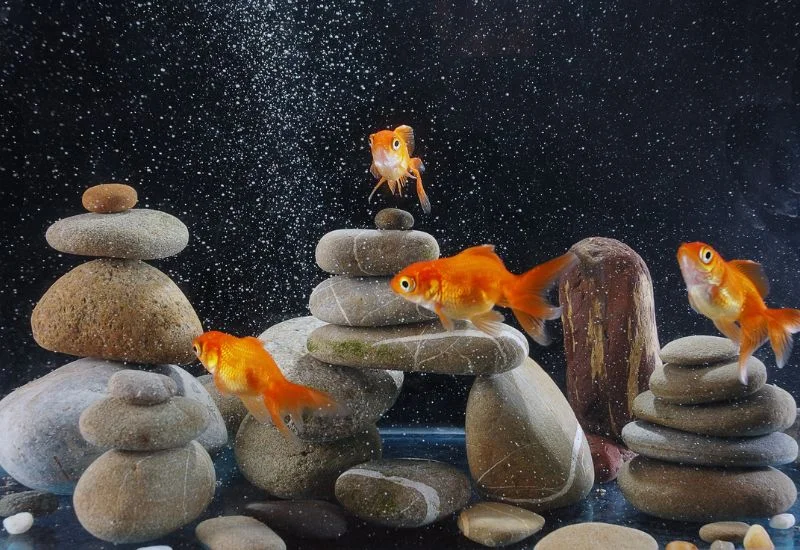
Cycling with fish is not recommended. This is because the fish-in cycling process is lengthy and time-consuming. Moreover, carelessness in any step may cause to affect the health of the fish.
In this method, stock a few bottom fish species (having low tolerance to ammonia) in the tank. These fish will discharge wastes that will produce the needed ammonia to trigger the cycle. This is stressful for fish and demanding; intuitive to monitor.
On the other hand, Fish-In cycling has its benefits. First, fish-in cycling is easy to do. Moreover, it has positive effects on the organism’s health if done carefully. The fish become capable of facing environmental changes, As a result, the immunity and environment-tackling strength of the fish gets boosted. For these reasons, some aquarists prefer fish-in cycling.
Choosing the Right Fish
Certain varieties of fish should not be kept in a fish tank if you want to fish-in cycling. Therefore, you will need to choose species that can tolerate low ammonia and nitrite levels.
Popular options for the best community fish are the zebra danios, white cloud minnows, and some tetras. To sum up, it is possible to avoid the choice of fragile species that are more sensitive to water quality changes.
Monitoring and Maintenance
In fish-in cycling, it is recommended that you should check the parameters of the water daily while cycling is undergoing. The presence of ammonia and nitrite should be as low as possible often less than 0. 25 ppm, to reduce the stress level on the fish as much as possible.
To reduce these toxins’ concentrations, you’ll have to make daily water changes, preferably 10-25% of the tank volume. Prevent the fish from coming into contact with the ammonia and nitrites.
Ethical Considerations
Fish-less cycling is preferred by many aquarists because conditions are set before fish is introduced into the aquarium may be dangerous. That is why you should note that cycling with fish is associated with certain risks but taking some precautions can help to avoid them.
In this case, plants or pure ammonia should be preferred for usage.
Cycling with Plants

Cycling with live plants in a fish tank is natural and very efficient. It is a fast process and definitely not harm any fish in the fish tank. Ammonia, nitrites, and nitrates are taken up by plants as nutrients during their growth, thus aiding in the maintenance of water quality.
Benefits of Plant Cycling
Reduced Ammonia Levels: Plants use ammonia for their nutrition and this helps in lowering the levels, especially during the first part of the cycle.
Faster Cycling: The existence of plants can bring in useful bacteria in the tank which may help accelerate the cycling process.
Safer for Fish: However, if you decide to place fish right from the beginning plants will help to balance and offer a less toxic environment for the fish.
Types of Plants to Use
Specifically, not all plants are as helpful as others when it comes to facilitating cycling. Floating plants, which grow fast such as hornwort, anacharis, and java moss have been shown to readily assimilate ammonia and nitrates.
These plants also create more surface area on which useful bacteria can form, especially on the pipe walls.
Tips for Successful Plant Cycling
Light and CO2: Your plants need proper lighting and if required CO2 injection to grow properly and play a part in the cycling process.
Regular Monitoring: With plants, one has to monitor the water parameters to determine the stage of the water cycle commonly done after certain weeks.
Balanced Ecosystem: Do not overstock the tank with plants since they consume the oxygen supply in the tank. It is essential to achieve conditions in which both plants and bacteria will be calm and have the necessary conditions for growth.
Cycling without Fish
Fishless cycling is considered the safest method for the beneficial process of aquarium cycling. In this method, cycling is first done, and then the fish is placed in the aquarium.
Drop a few drops of pure ammonia mixed(which can be gotten from a pet store) into the water. Their initial concentration level should be 2-4 ppm and should remain at this level throughout the funneling cycle.
It is the slower method. This is because, without the presence of the fish, the amount of ammonia is limited.
Factors Influencing Cycling Time
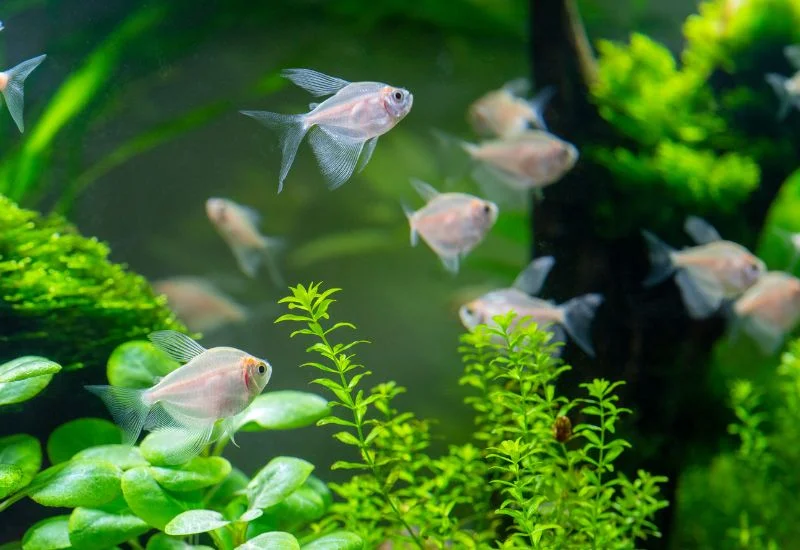
The duration of the cycling process can vary widely depending on several factors:
Tank Size
It will take a prolonged time to cycle larger tanks because a large amount of water and area is available for bacterial growth.
Temperature
The optimum temperature for bacterial growth is usually higher than normal; thus, cycling time could be shortened by using warm water.
Ammonia Source
How you start the cycle with ammonia using fish, fish food, or pure ammonia influences the rate of the cycle.
Plant Presence
This way, live plants help cycle the aquarium faster as they are capable of consuming ammonia and nitrites.
Typical Cycling Timeline
The general fish tank cycle may take about 4 – 8 weeks to be completed. At this time, the level of ammonia increases, and after a certain time, the level of nitrites increases, and after another certain time, the level of nitrates also increases.
To be safe, the cycle is complete when ammonia and nitrites read straight zero, while nitrates are found at a safe limit, and this is usually below forty.
Additional Care while Aquarium Cycling
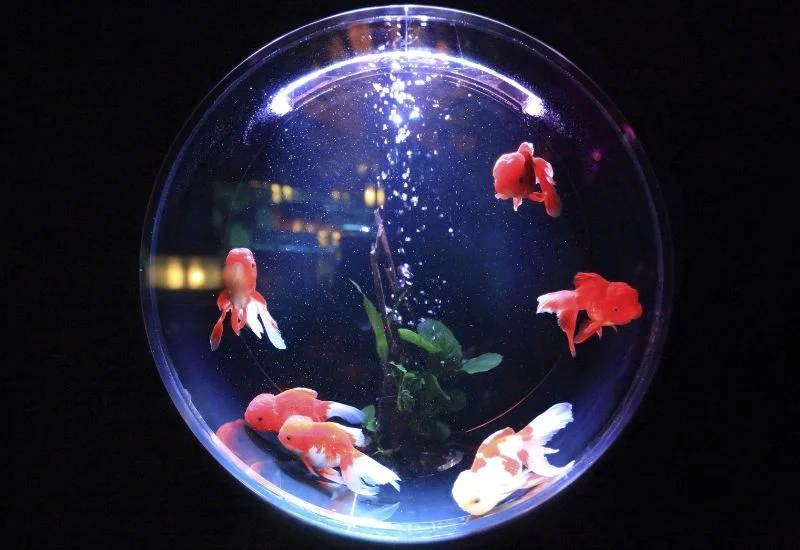
When you are doing the cycling of a fish tank, keep in mind that ultimate care is essential to get better results. After the specific parameters discussion of cycling in the above section, now it is time to cover the general guidelines about aquarium cycling that should be followed by every aquarium owner;
Ammonia and Nitrate Levels
The maintained level of ammonia and nitrates is necessary for a healthy aquarium. These chemicals help in protein synthesis in plants and interfere with the respiratory system of fish.
The increased level of ammonia can lead to suffocation in the fish. At the same time, the increased level of nitrates can cause the yellowing of the leaves in plants.
You should pay special attention to ammonia and nitrates, especially while doing fish-in cycling.
Partial Water Changes
Water quality is directly proportional to the health quality of your species in the tank. Because water is a survival medium for both fish and plants in this case. So consider the water changes timely to maintain its quality.
However, the process of water change also required a few guidelines. Don’t change the water completely at a time. Try to fix your maximum water changing limit to less than 25% at one time.
Water changing also dilutes the toxins present in the water to make it healthier for lives. Moreover, also avoids waterlogging or coagulation formation.
Avoid Overfeeding
Just like the other parameters, controlled feeding is also essential for the safe cycling process. Overfeeding may lead to more ammonia production. This ammonia production leads to toxicity and ultimately affects the health and survival of fish in the aquariums.
fish Ensure the cleaning and removal of the uneaten food. This is because such particles can lead to severe algal formation.
Protect Beneficial Bacteria
The presence of the beneficial bacteria is as important as the other parameters. For this purpose, a few guidelines or preventive measures should be followed.
By the process of fish tank cycling, we are encouraging the growth of beneficial bacteria. But, if the growth of their conservation is not ensured then our whole effort on cycling is useless.
So, don’t completely clean the filters or pipes during the process of cycling. It will lead to the removal of beneficial bacteria completely.
Maintain stable Conditions
Ensure the maintain pH, temperature, nutrient level, and food during the whole cycling process. The non-maintained conditions lead to stress in fish and stop the process of cycling.
In this way, the slowed cycling process and a stressed fish may lead to the ultimate aquarium loss.
Fertilizer’s Count
While considering the other parameters, it also gives a place to the fertilizers level. You know there is always a competition for nutrients between the plants and algae.
So, Ensure the fertilizers have the proper nutrients and potential to be safe for the growth of plants and fish also.
Use Water Conditioner
Always use water conditioners to make sure that all the toxins are neutralized.
Tap water always contains toxins, So, treat the tap eater with conditioners before use in the aquarium.
Patience
A slow and maintained aquarium cycling can be a healthy process. It’s a time-consuming process that takes from weeks to months.
Don’t try to speed up the natural cycling process by the excessive use of fertilizers or other chemicals. Otherwise, it will be damaging to the lives of the aquarium.
Conclusion
One process that is very important in setting up a new aquarium is cycling a fish tank. Therefore following the correct cycling method either fishless cycling, cycling with fish, or cycling with live plants you can ensure a healthy aquarium.
Adherence to the above guidelines, and patience when waiting for the cycle to start will pay off. A well-cycled tank is the key to a happy and healthy aquarium because it affects all inhabitants of the tank.
Frequently Asked Questions
Article Sources
Oceanexist provides reliable information with good-quality references to support the facts.
